La instalación de un sistema de videovigilancia de seguridad en exteriores requiere dos condiciones para que la cámara funcione con normalidad. Una es que haya una fuente de alimentación para la cámara, y la otra es que haya una red que pueda transmitir señales de vídeo. La transmisión de señal de la cámara de red puede ser a través de métodos cableados (cable de red, fibra óptica), inalámbricos (4G, 5G, Wi-Fi o AP inalámbrico) y otros. Además de la forma convencional de tender líneas eléctricas para el suministro de energía, también puede considerar el uso de energía solar + suministro de energía de la batería. Es una muy buena opción desplegar un sistema de videovigilancia de seguridad en exteriores sin electricidad ni red, y utilizar una cámara de vigilancia 4G alimentada por energía solar.
Debido a que los conceptos de protección del medio ambiente y baja emisión de carbono son generalmente aceptados, el desarrollo de nuevas tecnologías energéticas, y la energía limpia como la energía solar y la energía eólica son ampliamente utilizados para el suministro de energía. En el ámbito de la seguridad, el uso de la energía solar para deshacerse de los grilletes de cableado, selección de la cámara, la instalación es más flexible, conveniente, rápido, y en cierta medida más rentable.
La diferencia entre las cámaras 4G solares y las cámaras de vigilancia ordinarias se refleja principalmente en tres aspectos: bajo consumo de energía, paneles solares y baterías incorporadas. Este artículo resume las cámaras de seguridad solares desde estos tres aspectos.
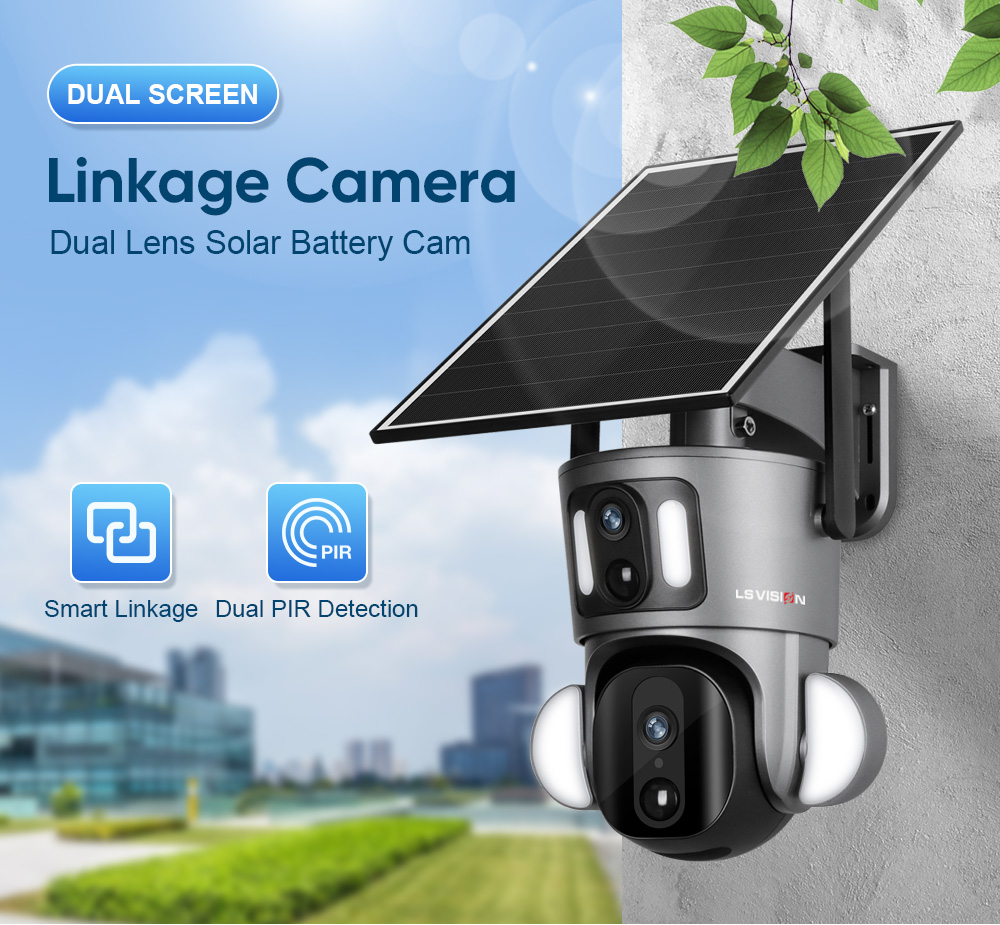
Bajo consumo de energía
Using solar panels + batteries for power supply, the power consumption of the camera is an important factor that must be considered. Of course, this factor should be considered in the product design stage, and it has little to do with ordinary users, but understand this clearly and use it for user selection. Solar-powered security cameras are not without their benefits.
When the security surveillance camera is running, it consumes different power in different states. For example, normal work, standby, PTZ rotation, remote access connection, local TF card video recording, night fill light activation, etc. consume different power. The capacity of the solar + battery power supply method is limited, and it is definitely not as good as normal electricity, so it must be considered to save the power consumption of the camera as much as possible in any working state. Considering different working states, solar cameras can be roughly divided into three power consumption modes: sleep, low power consumption, and full power consumption.
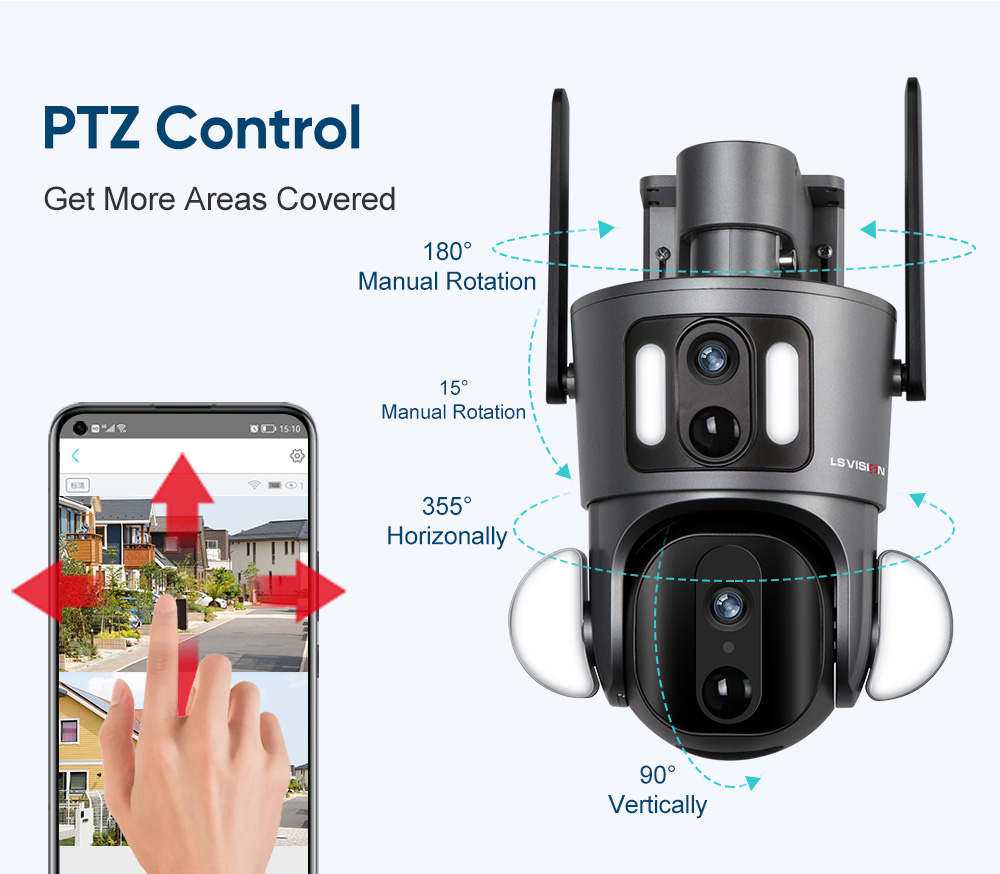
Sleep
In this state, all functions of the camera basically stop running (remote access to preview the camera screen, local video storage, etc.), only maintain the heartbeat connection with the network, the camera system is always in a dormant state, and the typical power consumption is about 400mW1–700mW2.
low power consumption
The camera can be woken up by the mobile phone APP or triggering an alarm (PIR or microwave infrared human body induction, wake-up button, etc.), and enters the working state from the dormant state.
Remote access to preview the real-time images of the camera requires a continuous network connection (Wi-Fi or 4G), and the camera is in a normal working state. At this time, the power consumption of the camera increases.
But if the camera does not have remote access and is always in low power consumption mode, when an abnormal situation occurs in the monitoring scene, there is no local recording on the TF card, and there is no remote connection to the NVR or back-end recording, then the deployment of monitoring is meaningless. The solution is very simple. Connect the camera with a human body sensor alarm device. When a person appears in the monitoring scene, the alarm will be triggered (general wind and grass will not trigger, avoiding false alarms), and then wake up the camera to enter the normal working state ( Push the alarm information or store the alarm video to the local TF card).
Considering the low power consumption of the equipment, the human body induction alarm equipment of the surveillance camera is mostly PIR human body induction or microwave radar human body induction. In order to make the accuracy of human detection higher, PIR human body induction and microwave are sometimes used at the same time, appearing on the same camera.
The camera is usually in a dormant state. When there is an app remote access or someone appears in the monitoring scene, the camera will be woken up and enter the normal function mode (according to the settings, there will be an alarm message push or an alarm video stored locally). When the remote access connection of the camera is disconnected or the alarm message disappears for a period of time (according to the setting, a few seconds to a few minutes), the camera will enter the sleep mode again and wait for the next wake-up. It should be noted that in the low-power working mode, the camera cannot be set to 24-hour or regular recording, only alarm recording.
In order to avoid being in sleep mode for the first time configuration and use, the camera will be equipped with a wake-up button, which can wake up the camera from sleep mode and enter the normal working state, so as to facilitate the installation and configuration of the camera.
That’s all for the camera running in low power mode.
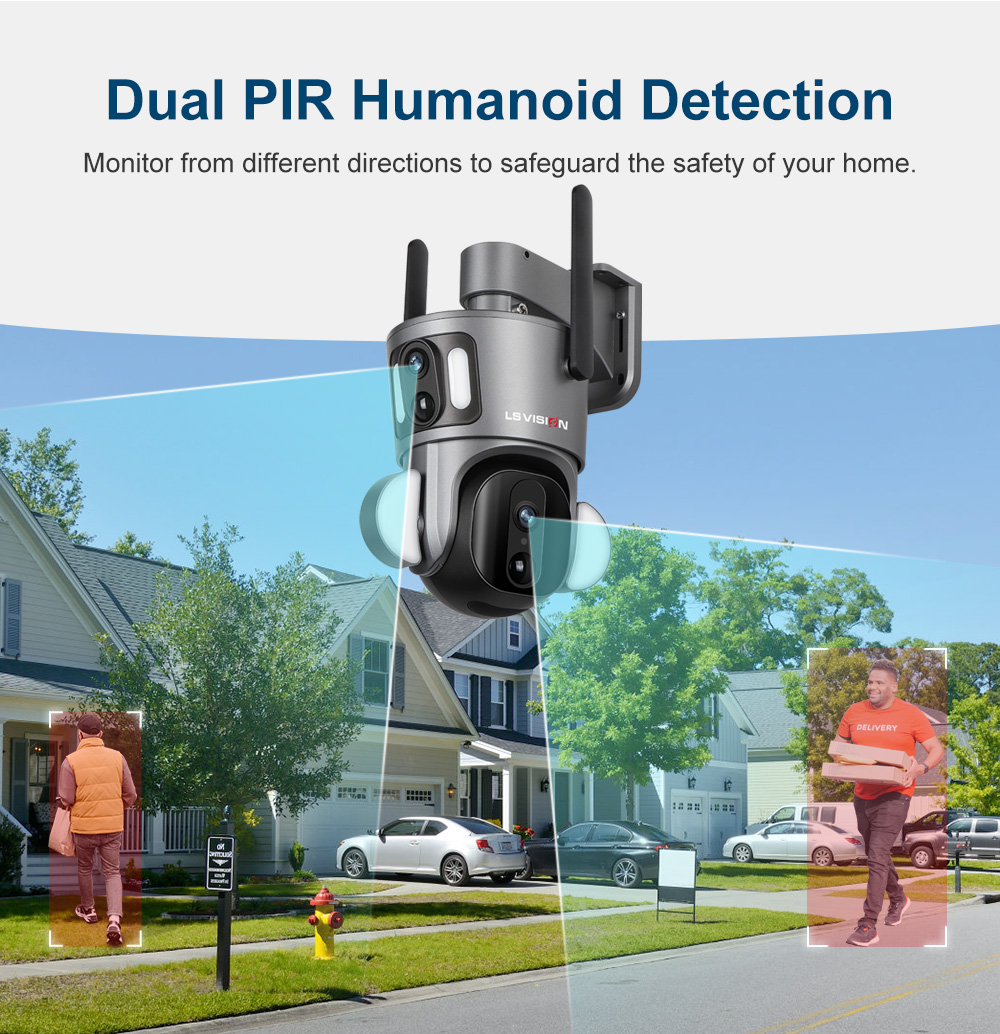
Full power consumption
The so-called full power consumption, as opposed to low power consumption, means that it is in a continuous normal working state just like the normal electric camera, and all functions of the camera can be turned on normally at this time.
Solar panels
Material
The basic principle of solar panels is to use the photoelectric effect of silicon and certain metals to convert solar energy into electrical energy, and then store it in batteries to provide electrical energy to corresponding equipment. The raw material silicon used can be divided into monocrystalline silicon and polycrystalline silicon. At present, monocrystalline silicon is mostly used, with a service life of more than 25 years and a photoelectric conversion efficiency of about 20%.
Instalación
According to the installation location, determine the inclination angle of the solar panel installation to obtain the maximum solar energy. The general principle is that the azimuth of the northern hemisphere faces due south, and the azimuth of the southern hemisphere faces due north. The following are the recommended inclination angles for installation of solar panels in typical areas in China.
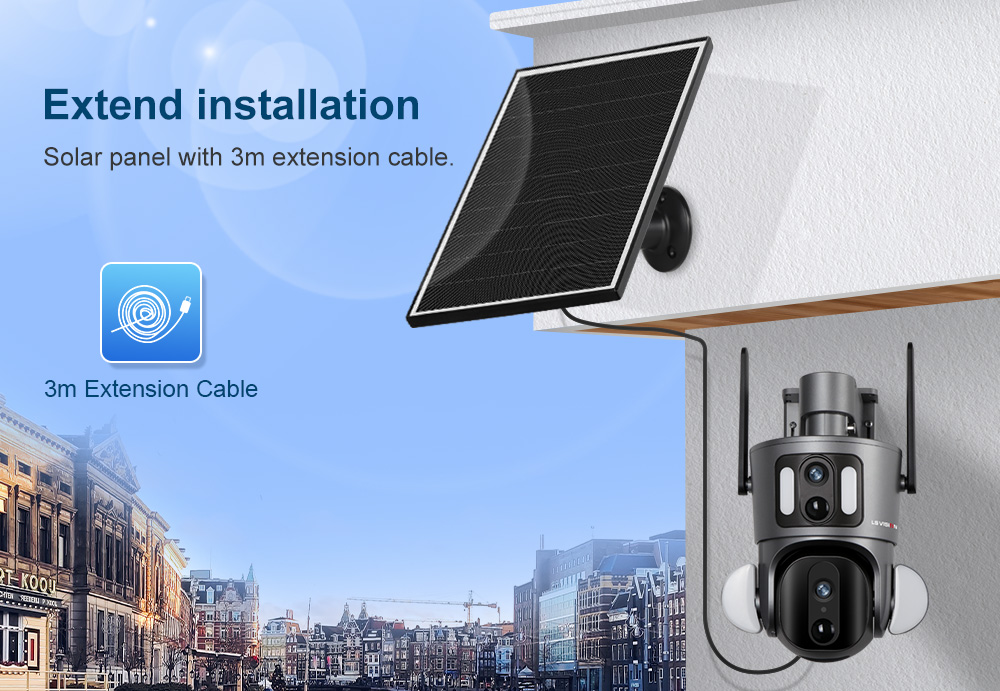
Batería
The batteries used in household solar cameras are mostly 18650 batteries and 21700 batteries. 18650 batteries are divided into ternary lithium-ion batteries and lithium iron phosphate batteries. The maximum capacity of a single 18650 lithium battery generally does not exceed 3400mAh, while the maximum capacity of a single 21700 battery can be as large as 5000mAh. The voltage of a single battery is generally 3.7V, and the voltage required by the camera to work is mostly 5V or 12V, so generally multiple batteries are connected in series and parallel to form a battery pack. For example, a household solar camera uses six 18650 batteries to form a battery pack, its maximum capacity can reach 20000mAh/3.7V, and its discharge efficiency is generally higher than 95%.
Professional solar cameras mostly use batteries, because considering the need for larger capacity electric energy, batteries are more cost-effective. However, the size of the battery is larger and the weight is heavier, which is not suitable for the requirements and trends of portable home cameras.
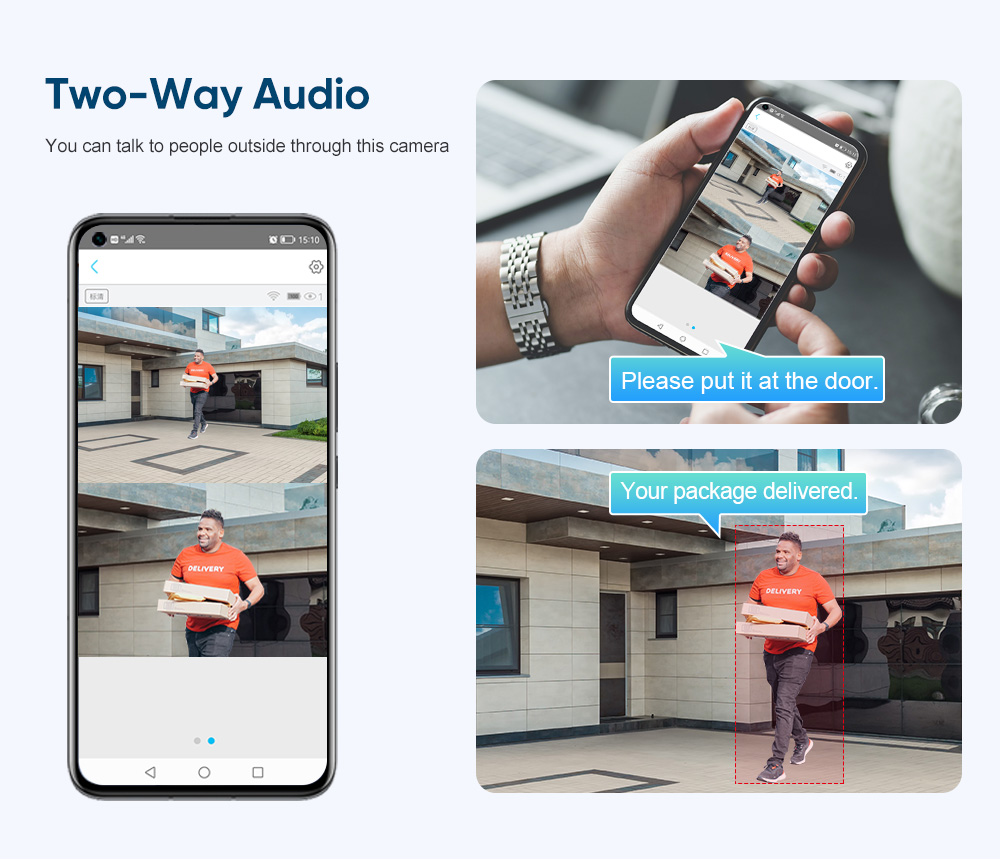
Selection calculation and use
Calculate the working time of the solar camera in continuous rainy days and the time required for charging with load. Camera power consumption, battery capacity, discharge efficiency, solar photoelectric conversion efficiency, solar panel power and other parameters need to be considered.
Different usage scenarios and usage habits will lead to a large gap in the calculated data.

